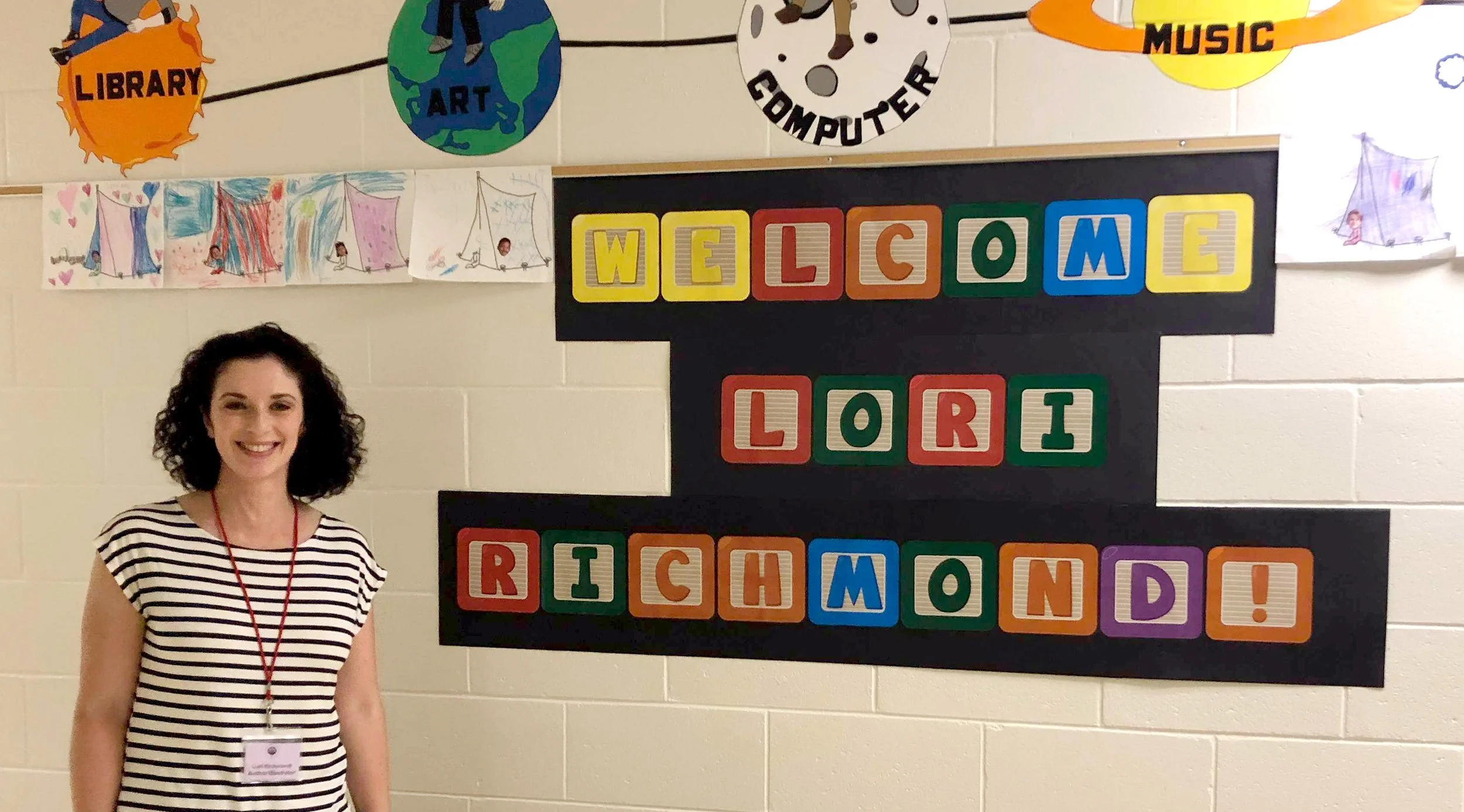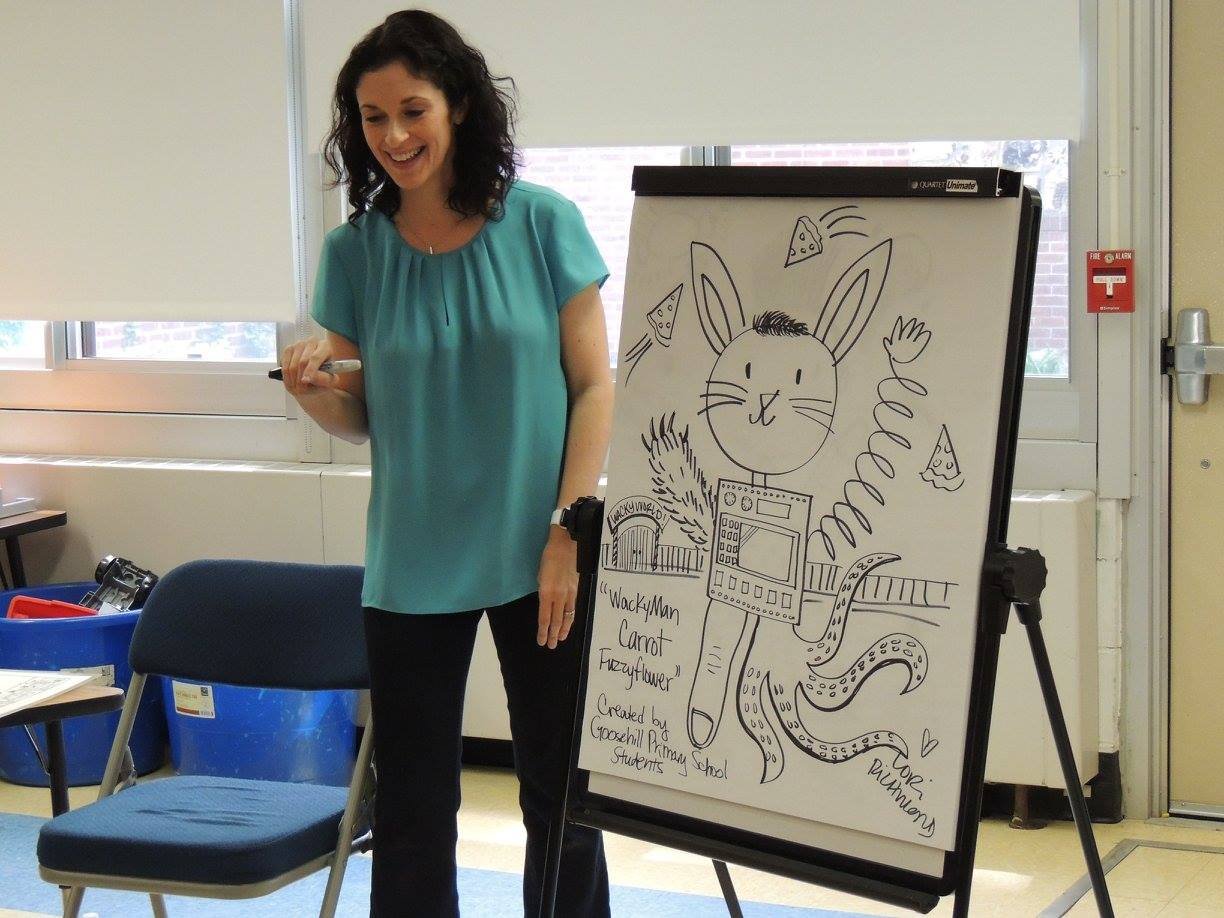What Makes a Good Author Visit?
Congrats! You've been invited to present at a school as a featured picture book author or illustrator! After the excitement wears off, you soon realize you'll need to satisfy the world's most honest audience—children. If they love you, you'll know it. If they don't, you'll know it too. I've got plenty of tips from personal experience to make your visit memorable and hopefully get you an invitation to return. Here is the ultimate prep guide.
Know your audience in advance
A good author visit is tailored to the age of the children
The sweet spot for picture book readers is ages 3-7. But did you know many middle school and high school ELA classrooms use picture books in their lessons? I have presented to kids as young as pre-K up to 6th graders. Messages can be universal, but you shouldn't use the same presentation for these two audiences. Create age-appropriate versions depending on the ages you are speaking to. Maybe the presentation for the littles is shorter with more visuals, and the version for the older kids goes into more detail or includes a hands-on workshop. At least you won't have to start from scratch for each version!
Classroom, auditorium, gymnasium, or somewhere else?
It's helpful to know in advance how many children you'll be speaking to, and in what room in the school you will be presenting. A classroom experience with 25 kids will be intimate, while a 500-seat auditorium might make you feel more like T.Swift in the Eras Tour. Will you be speaking from a stage? Will the children be sitting in chairs or on the floor? Will teachers be present the whole time? All of this is good to find out from your host school so that you know what to expect and prepare accordingly. Knowing the venue will also help you craft your presentation for that particular situation, and you can visualize yourself there as you practice. You can also get a sense of what acoustics to expect—large spaces with high ceilings tend to have an echo and sounds carry further (including the kids, when they cheer for you!)
At this school visit, I presented in a cafeteria space with a stage. I presented on the floor, though, so that I could easily walk around and move amongst the children to interact and answer questions.
Have a clear message or theme
What wisdom do you want to drop?
As a published author, the kids are going to look up to you. They will be amazed and excited to meet a REAL AUTHOR OR ILLUSTRATOR. This is a big deal for them and a big deal for you. Think about what nuggets of wisdom and experience you want to share that the children can carry into their work. Choose one as the theme of your presentation and build upon that idea. So many themes about writing, art-making, and creating are universal. Give examples, tell stories, and show behind-the-scenes of how you make things. It's pretty magical when kids realize that professional authors run into the same creative challenges they do.
Use visuals
There's nothing like a good slide deck. Visuals will not only help you along in your presentation, but they are a great way to engage kids. Give them some relatable insights into your life. Include silly photos of yourself at their age. Show them what your workspace looks like! Pet photos are always a hit. Share all the sh*tty first drafts and sketches you had to make to get to the published work. A sprinkling of memes also adds some humor. Most of my slides have no text on them, and just show a visual that I talk through. You should simply enhance what you say verbally—not be boring with bullet points.
Interact with your audience
Ask questions
Asking kids to "raise your hand if...." is an easy way to kick things off and hook ‘em in right away. "Raise your hand if you love to read books." "Raise your hand if you've ever met an author before." "How many of you like to eat ice cream? Raise your hand!" Sprinkle these moments throughout your presentation to keep reeling them back in when their young ears eventually do wander. Just make sure your question-asking is relevant to what you're talking about at the moment.
Use props
Physical props can be a great compliment to a slide deck. Bring things like sketchbooks, mockups, photo blowups... whatever will help get your point across in an analog way. I made plush dolls of my characters so that the kids could "meet" them. I also use them to hold up and point to when talking about my characters. You might even have the children handle whatever it is you bring. It's a nice way to add some tactile highlights to your presentation.
Live drawing is always a home run!
Illustrators are going to have a major benefit here because there is nothing better than live drawing! Kids and adults are always completely amazed to see what happens when an artist puts pen to paper. This is probably THE best way to reel them in! Draw characters from your books or engage your audience to call out ideas and you can all design a character together. Not an artist? Fear not, authors! You too can use the trick of writing on a large pad and easel to help kids brainstorm or outline story ideas. There’s just something about putting a Sharpie marker to paper that kids (and adults) love to watch.
One of my favorite drawing games to do with a big group is to design a character. I prompt the kids to call out suggestions for each body part (head, body, arms… etc) and once they “get it”, which happens pretty quickly, the drawing gets wackier and wackier which kids LOVE and always has a silly result.
Connect with your host to iron out the details
Sign a work agreement
While visiting a school is oh-so-very-fun, you are being hired to do a job. Write up a work agreement and have your host sign it. This gets everyone on the same page ahead of time and makes sure both parties have a clear understanding about what you are expected to deliver. Here are some examples of what to include in your agreement:
Date and time of the visit
Location of the visit
Name of your main contact
Description of services you will provide (how many sessions, length of session, etc)
What the school will provide (microphone, drawing pad and easel, tech support, etc)
Transportation/travel/hotel costs or reimbursements
Cost of the visit, and how and when you should be paid
Any other details about book signing, lunch sessions, or other special services
Cancellation policy due to unforeseen circumstances by either party
Whatever else you'd like made clear ahead of time!
Timing is everything
An important thing to consider is how many presentations you will agree to do in one visit. A “full-day visit” doesn’t mean you are presenting every minute you’re at the school. It could mean 2 or 3 presentations of the same content, or, it could mean a combination of presentations, breakout sessions, workshops, ‘lunch with the author’, or something else. When you present, you’ll need to be “on” which can be physically exhausting especially when we are talking about hundreds of elementary schoolers. Only you can decide what is just right or too much for you. Schools are very often accommodating in combining classes or grades so that you can minimize the amount of presentations but reach the maximum amount of students. As best you can, work with the host to schedule breaks during the time you’re there so that you can recharge a bit between sessions. Make sure to bring snacks and water!
Ask for a tech buddy
Your best friend at a school visit is going to be the person who helps you successfully set up your slides. Chances are you will be in a shared space like an auditorium or a gymnasium, and the teacher, librarian, or PTA chair who invited you will have no idea how to get the projection up and running in that room. This happens way more often than not! Request that a knowledgeable tech person be available at the time you arrive to help you get set up. This will reduce a ton of stress. Trust me on this one.
This is a tangled bunch of wires I was greeted by at a school. Because we discussed it in advance, there was a tech person ready to help me. Whew!
An author visit is like a box of chocolates, you never know what you’re gonna get
Have backup plans for all the things
This is where you need to summon all the knowledge you acquired as a kid in scouts... be prepared! Expect the unexpected. There will be a power outage and you won't be able to project your slides. The dongle they told you to bring for your computer is actually not the one they use at their school to hook up to the projector. Your computer breaks. There was a flood in the room they had booked for you and you'll be moved to a room with a completely different setup. Most of the time your visit should go off without a hitch... I repeat, should. But things happen! You need to be able to forge on and give your presentation, or a presentation of some kind, under any circumstance. Having a backup plan will reduce a ton of stress and make you feel readier than ready. The school will also be super impressed by your ability to pivot on the fly, and you'll teach the kids a lesson about showing up no matter what.
Good luck out there, everyone! You’ve got this.




